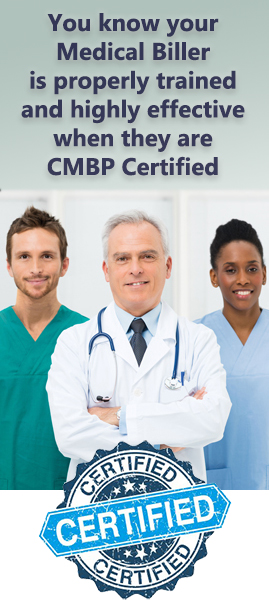- 08/20/2025
- Posted by: Medical Billing Course
- Category: Medical Billing Course

Mastering medical billing scenarios is vital for accuracy and cash flow, especially with 77% of providers waiting over a month for payments. This article addresses common challenges like claim denials, coding errors, HIPAA compliance, and payer intricacies, offering practical solutions and prevention strategies.
“Our course differentiates itself by immersing students in real-life scenarios. This hands-on approach is crucial for preparing them for the dynamic challenges they’ll face on the job, ensuring they’re not just learning theory, but gaining practical, applicable skills.” – Tri Smith, Instructor, MedicalBillingCourse.com
Common Medical Billing Scenarios
Key scenarios include claim submissions, denials, coding errors, accounts receivable delays, HIPAA breaches, and payer-specific complexities.
Claim Denial Scenarios
Denials often result from eligibility issues, missing prior authorizations, or improper modifier use.
- Eligibility mismatches due to outdated patient data.
- Lack of pre-approvals for specialized services.
- Modifier misuse (e.g., CPT modifiers 25 or 59).
Coding Error Scenarios
Coding errors occur when CPT or ICD-10 codes don’t match documentation, leading to rejections or underpayments.
- Assigning non-billable codes.
- Failing to use the correct ICD-10 specificity.
- Omitting necessary procedure modifiers.
Accounts Receivable Challenges
Underpayments, delayed patient collections, and write-offs inflate days in AR and strain cash resources.
- Payer reimbursements below contracted rates.
- Unclear or ignored patient statements.
- Inconsistent follow-up on outstanding balances.
HIPAA Compliance Influence
Every day, medical billing scenarios involve HIPAA, which mandates strict protocols for data handling in claim submissions and patient communications.
- Unauthorized access to electronic health records.
- Inadequate encryption of billing transmissions.
- Insufficient audit trails for PHI disclosures.
Patient Data Entry and Privacy Breach Scenarios
Manual entry mistakes and weak security controls expose PHI, leading to denials or penalties.
- Transposed patient identifiers on claims.
- Unsecured spreadsheets storing PHI.
- Lost or stolen billing devices.
Mastering Claim Denial Management

Effective denial management involves identifying the reason, gathering documentation, correcting errors, appealing, and tracking outcomes to recover revenue and prevent future denials.
American Academy of Professional Coders (AAPC), “Denial Management: A Step-by-Step Guide” (2022)
Root Causes of Claim Denials
Denials typically occur due to incorrect insurance information, invalid code combinations, or failure to document medical necessity.
Step-by-Step Denial Resolution – Real Life Medical Billing Scenarios
- Analyze EOB denial codes.
- Retrieve the original claim and medical record.
- Update claim details (modifier, code, eligibility).
- Resubmit with an appeal letter.
- Monitor payer response and adjust procedures.
Commonly Denied Codes
Denials often involve Modifier 25, CPT 99213 vs. 99214 mismatches, and ICD-10 codes missing laterality (e.g., M17.11 vs. M17.10). You may run across these in various medical billing scenarios.
Prevention Strategies
Proactive steps include automated eligibility verification, real-time coding validation, and regular modifier-usage audits.
Learning Outcomes
Mastery of denial scenarios enables accurate EOB interpretation, effective appeals with documentation, and denial-prevention protocol design.
Enhancing Skills with Coding Error Resolution

Coding error resolution aligns clinical documentation with industry-standard codes for compliance and optimal reimbursement.
Frequent ICD-10 and CPT Coding Errors
- Using unspecified ICD-10 codes lacking clinical detail.
- Omitting required procedure modifiers.
- Selecting outdated CPT codes.
Modifier Usage Errors
Misapplied modifiers trigger denials when payers require distinct service separation.
- Modifier 59 vs. XS confusion.
- Overuse of modifier 26.
- Omission of 25 for same-day E/M and procedure.
Best Practices for Correction
- Audit claims against chart documentation.
- Cross-reference code sets with official guidelines.
- Implement peer reviews before submission.
Impact on Revenue Cycle Management
Accurate coding shortens days in AR, decreases write-off rates, and improves payer relationships.
Accounts Receivable and Payment Challenges
AR challenges arise from underpayments, patient balance confusion, and manual tracking inefficiencies.
Underpayments and Delayed Payments
Underpayments stem from misapplied contractual adjustments, claim edits, or missed follow-up on partial remittances. Delayed payments often result from unclear patient statements.
Improving Patient Balance Collections
- Offering payment plans at checkout.
- Sending clear, itemized statements electronically.
- Training staff in empathetic balance discussions.
Automated AR Support
Automation streamlines AR with EOB reconciliation bots, automated patient billing reminders, and dashboard analytics for aging receivables.
Implications of AR Challenges on Cash Flow
Prolonged AR turnover increases borrowing needs and strains practice operations. Rapid collections stabilize finances.
HIPAA Compliance in Medical Billing Scenarios
HIPAA compliance mandates strict protocols for handling Protected Health Information (PHI), including encryption, staff training, and breach-response plans.
U.S. Department of Health & Human Services, “HIPAA for Professionals” (2024)
Common HIPAA Compliance Issues
- Unencrypted emails containing PHI.
- Over-sharing on shared workstations.
- Inadequate breach response protocols.
HIPAA Violations’ Impact
Violations delay claims, trigger investigations, and incur penalties, impacting gross collections.
Prevention and Resolution Strategies
- Encrypt all electronic communications.
- Conduct quarterly staff training and audits.
- Maintain a formal breach-response plan.
Specialized Medical Billing Scenarios
Each payer type (Medicaid, Medicare, private) enforces unique rules requiring tailored knowledge.
Medicaid Billing Complexities
Medicaid often imposes state-specific prior authorization requirements, fee-for-service vs. managed-care edits, and income-based eligibility fluctuations.
Medicare Billing Differences
Medicare complexity includes National Correct Coding Initiative (NCCI) edits, Medicare Secondary Payer coordination, and Part B deductible/coinsurance tracking.
Private Payer Reimbursement Issues
Private insurers may require customized pre-certification forms, unusual bundling edits, and specific credentialing.
Improving Billing Accuracy Through Payer Understanding
Developing payer-specific workflows and coding crosswalks streamlines claim preparation, reduces resubmissions, and lowers denial rates.
Launching a Home-Based Medical Billing Business
Launching a home-based business requires understanding startup logistics, client acquisition, software choices, and scenario-based workflows.
Business Setup Challenges
New businesses often struggle with securing initial clients, establishing secure data management systems, and defining competitive pricing.
Client Acquisition Scenarios
Effective acquisition involves networking, offering trial services, and attending industry events for referrals.
Software Selection Criteria
Key criteria include integrated eligibility verification, automated denial tracking, and HIPAA-compliant data encryption.
Scenario Preparation for Business Success
Practical scenario training builds confidence in managing complex denials remotely, implementing efficient AR workflows, and advising clients on payer compliance.
Interactive Tools and Case Studies
Interactive tools and detailed case studies foster active learning, reinforcing theoretical knowledge through hands-on practice.
Scenario Simulations for Skill Improvement
Simulations replicate denial and coding challenges, enabling practice of eligibility checks, appeals, and coding accuracy with instant feedback.
Successful Denial Appeals Case Studies
Case studies showcase real outcomes, such as reducing modifier denials by 50% or recovering $10,000 in underpayments.
Quizzes for Knowledge Reinforcement
Quizzes provide immediate reinforcement of key concepts and scenario-based questions, tracking performance to highlight improvement areas.
Visual Aids for Complex Processes
Infographics and flowcharts clarify denial appeal workflows, revenue cycle stages, and HIPAA breach response steps.
Frequently Asked Questions
Q: What are the top AR denial scenarios? A: Incorrect patient data, missing authorizations, coding mismatches, coordination-of-benefits errors, and untimely filing.
Q: How do you handle denied claims step-by-step? A: Review EOB codes, gather documentation, update claim details, submit appeal, track, and log resolution.
Q: What are the four types of medical billing? A: Professional, institutional, dental, and home-health billing.
Q: What is an entity code? A: An entity code identifies payers or providers in electronic claims for standardized data exchange.
Q: How can you prevent common billing errors? A: Use real-time eligibility checks, code-validation software, modifier audits, and regular staff training.
Scenario 1: Resolving Claim Denial Due to Incorrect Modifier Usage
Resolving modifier-related denials requires pinpointing the misused code and applying the correct CPT modifier per payer guidelines.
- Causes: Using modifier 25 when services are global, omitting modifier 59 for separate procedures, and applying modifier 26 to the entire claim.
- Correction Steps: Identify the denied line item and modifier, review payer requirements, adjust the claim with the correct modifier, and resubmit with documentation.
- Frequently Misused Modifiers: 25, 59, 26, and 76.
- Prevention: Periodic modifier-use audits, auto-validation in billing software, and coder training.
- Skills Developed: Modifier mastery, understanding payer edit patterns, and strengthened appeal documentation.
Scenario 2: Managing Coding Errors in ICD-10 and CPT
Managing coding errors demands rigorous chart review and cross-referencing with the latest code sets.
- Common ICD-10 Mistakes: Use of unspecified codes, failure to capture laterality, and selecting retired codes.
- Identifying/Correcting CPT Errors: Compare billed procedures against operative reports, verify code descriptors, and confirm modifier requirements.
- Financial Impacts: Underpayments, claim rejections, increased administrative costs, and potential audit exposure.
- Prevention: Annual code-set updates, peer-review audits, and real-time code validation tools.
Scenario 3: Overcoming Accounts Receivable Challenges
Overcoming AR challenges relies on consistent follow-up workflows and patient-centric billing communications.
- Causes of Underpayments/Delays: Misapplied contractual adjustments, unclear patient statements, and lack of timely payer tracking.
- Improving Patient Collections: Clear payment portals, automated reminders, flexible payment options.
- Role of Automation: Handles aging report generation, EOB reconciliation, and flags high-risk accounts.
- Monitoring AR Performance: Dashboards tracking days in AR, denial rates, and collection percentages.
- Learning Outcomes: Mastering billing software, developing patient communication skills, and implementing AR analytics.
Scenario 4: Addressing HIPAA Compliance Issues in Billing
Addressing HIPAA issues combines policy enforcement, staff education, and technical safeguards to protect PHI.
- Typical HIPAA Violations: Unsecured email transmission of PHI, unauthorized access, and incomplete breach incident documentation.
- Responding to Breaches: Activate breach-response plan, notify affected individuals within 60 days, document corrective actions.
- Best Practices: Encrypt all PHI, conduct annual risk assessments, enforce password policies, and train staff.
- Case Studies: Show how practices improved encryption and access controls after breaches.
Scenario 5: Handling Medicaid Billing Complexities
Handling Medicaid complexities requires mastering state rules, eligibility tracking, and managed-care carve-outs.
- Unique Challenges: State-specific prior authorization, managed vs. fee-for-service caps, income eligibility checks.
- Navigating Denials: Analyze state-specific denial codes, review program manuals, and submit appeals with proof of eligibility.
- Common Coding Issues: Incorrect state-specific codes, missing modifiers, and failure to document eligibility screenings.
- Prevention Tips: Automated eligibility verifications, subscriptions to state policy updates, consolidated denial-code knowledge base.
Scenario 6: Managing Medicare Billing Scenarios
Managing Medicare scenarios involves NCCI edits, deductible tracking, and secondary payer coordination.
- Medicare-Specific Rules: NCCI edits, coordination of benefits, Part B deductible/coinsurance.
- Resolving Rejections: Identify NCCI edit pairs, apply modifier 59 where appropriate, and reconcile patient responsibility.
- Coding Guidelines: Follow CMS code transmittals, reference MLN articles, and adhere to National Coverage Determinations (NCDs).
- Key Learning Outcomes: Mastering NCCI edits, appeals processes, and secondary payer billing coordination.
Scenario 7: Resolving Private Payer Reimbursement Issues
Resolving private payer issues requires tailored appeals, payer-specific documentation, and persistent follow-up.
- Common Denial Reasons: Missing prior authorizations, credentialing lapses, unbundled service edits.
- Appealing Denials: Compile contract references, clinical notes, and peer-review evidence; submit per insurer guidelines.
- Supporting Documentation: Signed physician notes, authorization forms, and itemized charge summaries.
- Skills Enhanced: Negotiation skills, documentation accuracy, persistence in follow-up.
Scenario 8: Starting a Home-Based Medical Billing Business
Launching a home-based billing business blends technical proficiency with entrepreneurial strategy.
- Initial Setup Challenges: Establishing secure IT systems, crafting service agreements, and pricing competitively.
- Acquiring Clients: Networking, offering trial audits, showcasing successful scenario outcomes.
- Software Choice: HIPAA-compliant solution with integrated AR workflows, denial tracking, and cloud-based access.
- Resources for Success: Business-launch guides, marketing templates, mentorship networks.
Scenario 9: Using Interactive Simulations for Training
Interactive simulations immerse learners in realistic billing challenges, boosting retention and decision-making.
- Simulation Types: Denial management, coding audits, AR follow-up, HIPAA breach response.
- How Quizzes Reinforce Learning: Test scenario outcomes, offer instant feedback on choices and strategies.
- Visual Tools: Flowcharts, infographics, and animated diagrams illustrate claim lifecycles and processes.
- Improved Certification Outcomes: Higher exam pass rates and faster on-the-job performance improvements.
Scenario 10: Applying the Step-by-Step Appeals Process
A formal appeals process systematically recovers denied revenue and informs preventive protocol improvements.
- Key Steps: Identify denial code, gather documentation, draft appeal letter, submit via payer channel, track, and escalate.
- Documenting/Submitting Appeals: Use standardized templates, include clinical notes, and maintain an appeal log.
- Common Appeals Outcomes: Recover 70–90% of denied charges; partial approvals highlight documentation gaps.
- Skills Gained: Persuasive documentation, payer-specific negotiation tactics, refined tracking processes.
Student Success Spotlight
“The real-world scenarios in the MedicalBillingCourse.com program were invaluable. I went from feeling overwhelmed by claim denials to confidently resolving them. The practical exercises, especially those focusing on modifier usage and payer-specific appeals, directly prepared me for my current role. I successfully appealed a complex denial that recovered over $5,000 for my practice within my first month!” – Jessica M., Certified Medical Biller
Payer-specific workflows and coding crosswalks streamline claim preparation, reduce resubmissions, and lower denial rates.
Mastering these real-world medical billing scenarios equips you with the practical skills to reduce denials, optimize coding accuracy, ensure compliance, and launch a thriving career. By applying step-by-step workflows and leveraging interactive simulations, you’ll stand out as an expert medical biller ready to drive financial outcomes and compliance excellence.

